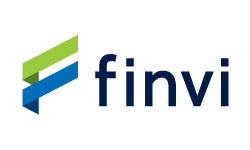Source: site
The U.S. student loan crisis has evolved from a simmering economic concern into a full-blown structural challenge, reshaping the financial lives of millions and recalibrating the risks and opportunities for investors. Over the past two years, the end of pandemic-era repayment pauses, the expiration of delinquency reporting moratoriums, and the passage of the One Big Beautiful Bill Act (OBBB) in 2025 have created a volatile landscape. For young borrowers, the stakes are particularly high: 31% of those with payments due in early 2025 were 90+ days delinquent, with 1.8 million projected to default by July 2025 alone. For investors, the question is no longer whether student debt will impact markets, but how to navigate the turbulence it creates.
Policy Shifts and Structural Reforms
The OBBB Act, signed in July 2025, represents a seismic shift in federal student loan policy. By capping graduate and parent loan borrowing, restructuring repayment plans, and imposing accountability measures on colleges, the law aims to curb excessive debt accumulation and improve borrower outcomes. For example, annual graduate loan limits are now capped at $20,500 for most programs, with aggregate limits of $100,000. These caps are expected to reduce borrowing for 20% of master’s students and 8% of doctoral students, particularly in high-cost private programs. Meanwhile, the Repayment Assistance Plan (RAP) replaces income-driven repayment (IDR) models, ensuring balances do not grow due to unpaid interest and guaranteeing forgiveness after 30 years of payments.
For investors, the OBBB’s emphasis on repayment discipline and institutional accountability introduces both risks and opportunities. While stricter borrowing limits may reduce tuition inflation and stabilize the education sector, they could also pressure for-profit colleges—already under scrutiny for high default rates (14.7% within three years of repayment). Conversely, institutions that align with the “do no harm” test, which ties federal loan eligibility to graduate earnings, may see increased enrollment and financial stability.
Rising Defaults and Credit Market Implications
The resumption of federal loan payments in 2023 and the end of the 12-month on-ramp period in October 2024 triggered a delinquency surge. By Q1 2025, 7.7% of student loans were 90+ days past due, nearly triple the 2020 rate. This trend has had cascading effects on credit markets. Over 2.4 million borrowers with prime credit scores (above 620) saw their scores drop by over 100 points, jeopardizing access to mortgages, auto loans, and credit cards. For financial institutions, this means higher risk premiums and tighter lending standards, particularly in sectors reliant on young borrowers.
Geographic and demographic disparities further complicate the picture. Mississippi, Alabama, and West Virginia report delinquency rates exceeding 30%, while Illinois and Massachusetts hover below 15%. Similarly, borrowers over 40, Black/African American students (21.8% default rate), and those with associate degrees face disproportionate risks. These trends highlight the uneven impact of policy changes and underscore the need for investors to segment their exposure carefully.
Investment Risks and Opportunities
The student loan sector’s volatility presents dual challenges. On the risk side, rising defaults could strain the U.S. Department of Education’s collection efforts, with wage garnishment and tax refund interception becoming more common. For credit card companies and mortgage lenders, the erosion of borrower creditworthiness may lead to higher delinquencies in adjacent sectors. Additionally, political backlash against OBBB’s repayment reforms—such as the elimination of large-scale forgiveness—could spur regulatory uncertainty.
However, the OBBB’s structural reforms also create opportunities. Investors might consider:
1. Financial Services Providers: Firms offering debt counseling, repayment assistance, or credit repair services could benefit from the growing number of borrowers seeking solutions.
2. Education Technology: Platforms that help colleges meet the “do no harm” test by improving graduate outcomes or reducing costs may see increased demand.
3. Consumer Credit Reinsurance: As credit scores decline, insurers and lenders that hedge against delinquency risks could gain traction.
Conclusion
The U.S. student loan landscape is at a crossroads. While the OBBB aims to stabilize the system, the transition period is marked by elevated defaults and policy uncertainty. For investors, the key lies in balancing caution with strategic foresight. Short-term risks in consumer credit and education sectors must be weighed against long-term opportunities in sectors adapting to the new normal. As the market digests these changes, those who align with the OBBB’s goals—disciplined borrowing, sustainable repayment, and institutional accountability—may find themselves positioned for resilience in an evolving economy.




